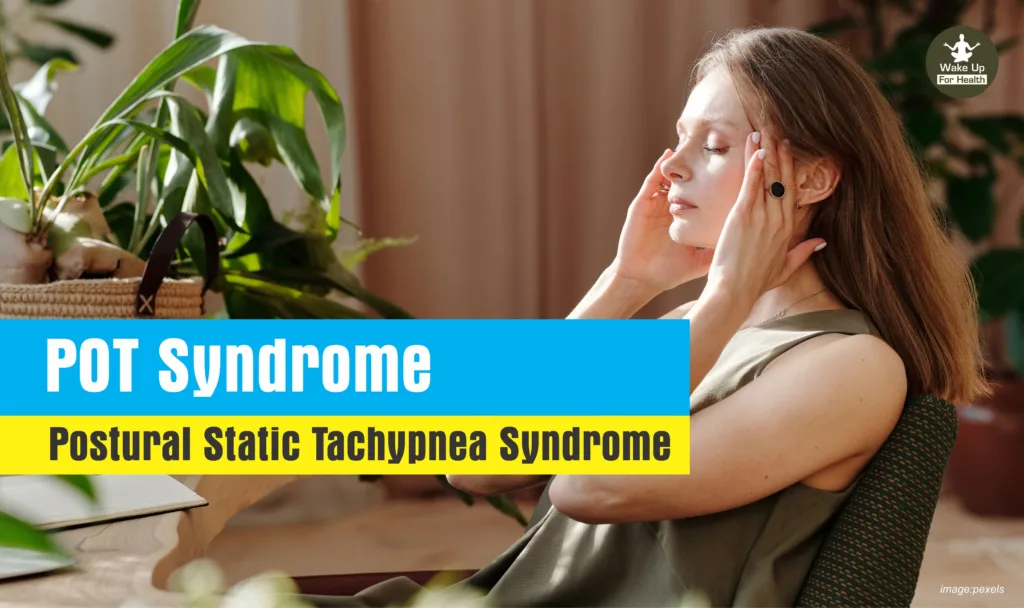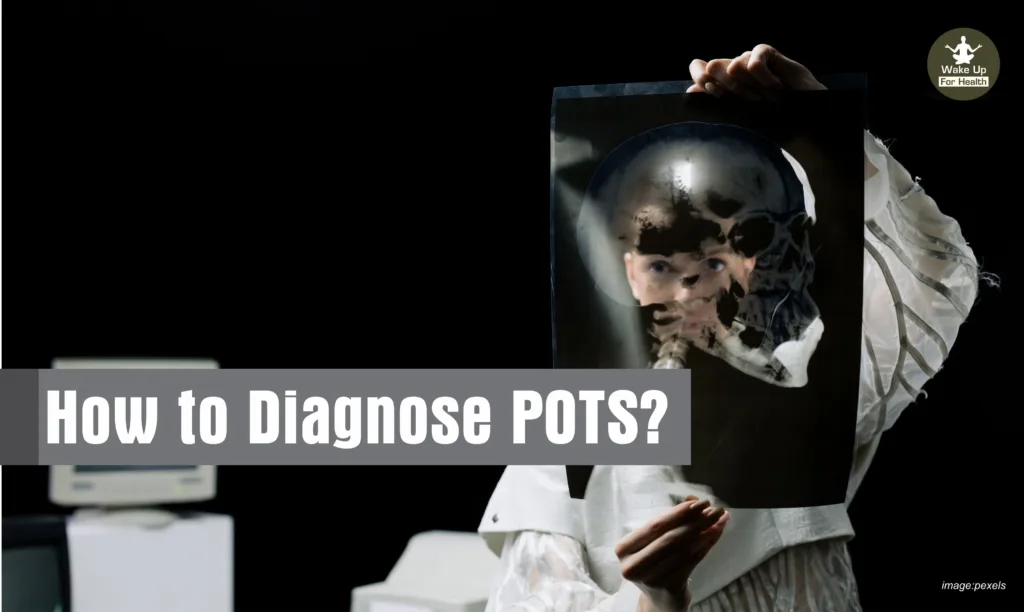Now a days, its being hard to get settle with nature where we and our laziness and dependency on short cuts with technology. We have forgotten nature rules, nature diets and life of nature. Arising diseases which we never hear or were rare to know. Today we are talking about Postural Orthostatic Tachycardia Syndrome (POTS), its symptoms, causes and treatment.

Detailed information on POTS syndrome, including risk factors, symptoms, causes, and treatment.
POTS or Postural Orthostatic Tachycardia Syndrome is a circulatory condition in which your heart rate changes whenever you change position. However, Our heart pulse rate should be same whether we are sitting or standing or lying down, but if we found change in heart rate then we known it as Orthostatic Intolerance (OI).
According to reliable sources, at least 500,000 people in the US have orthostatic intolerance (OI). However, others believe this figure is much higher, with estimates that more than 5 million people are experiencing OI. People with this neurological condition experience symptoms in varying intensities. Furthermore, about 25% of them experience severe symptoms that can lead to physical impairment.
During a POTS attack, a person is likely to experience dizziness, fainting or lightheadedness, accompanied by a rapid increase in heart rate with a change in position.
The researchers still unknown to know the main causes of POTS disease. However, with the right combination of medicines, physical therapy, diet, lifestyle changes, and other treatments, you can get relief.
How Many Types of POTS are there?
Some of the most common POTS are:
1. Hyperadrenergic POTS
In this type, levels of norepinephrine (the stress hormone) are too high. This makes your sympathetic nervous system (SNS) hyperactive.
2. Neuropathic POTS Attacks
In this type of POTS, small-fiber neuropathy occurs in which damage occurs to the tiny nerve fibers that control the contraction of blood vessels in your abdomen and limbs, facilitating blood flow.
3. Hypovolemic POTS
This occurs when your blood levels are abnormally low.
4. Secondary POTS
An underlying condition, including Lyme disease, diabetes, and autoimmune health conditions, such as Sjogren’s syndrome and lupus, may cause autonomic neuropathy in a person with secondary POTS.
Must Read Also :
How to Fight with Chikungunya Virus?
What are the Symptoms of a POTS attack?
POTS symptoms are more pronounced after a meal when blood is redirected to your digestive tract. You may also experience symptoms when you’re under stress, standing in line, or in the shower.
• Stomach ache
• Dizziness or fainting
• Blurred vision
• Brain fog
• Feeling hot or cold
• Shivering or tremors
• Excessive sweating
• Nausea
• Vomit
• Swelling
• Diarrhea or constipation
• Excessive fatigue
• High or low blood pressure
• Altered heart rate
• Pain in chest
• Anxiety
• Headache, body ache or neck pain
• Insomnia
• Abnormal color of hands and feet
What is the Causes of POTS?
As we said, Our Scientists and researchers are still researching to caught, what is causes for POTS. However, it is observed that most of the people with this condition start noticing their symptoms after major surgery, pregnancy, trauma or viral illness. Symptoms may also worsen before menstruation.
Most researchers believe that several factors can cause POTS. There are a number of associated abnormalities with the condition that may affect its development and progression. This includes:
• Damaged nerves in certain muscles, especially in the legs and feet
• Abnormal decrease in blood level
• Less blood returns to the heart when changing positions
• Heart disease
• Fluctuations in blood pressure
• Increased stress levels
It’s a bit of percentage of patient of POTS have OI family history. This implies that a genetic factor may be involved in the cause of POTS.
What are the Risk Factors for POTS?

Most people with POTS are girls and women between the ages of 15 and 50. Many people in this category report symptoms of POTS right before their period. However, few factors are responsible to increase the chances of developing such condition. These are includes:
• Medical illness, severe infection, pregnancy, viral illness or trauma that requires for hospitalization and long bed rest.
• Recent history of mononucleosis
• Autoimmune conditions such as Sjogren’s syndrome and celiac disease.
People with a medical history or health condition related to secondary POTS are potentially at higher risk of developing POTS. The conditions include the following:
• Amyloidosis
• Chronic diabetes mellitus
• Liquor
• Heavy metal poisoning
• Sarcoidosis
• Sjogren’s syndrome
• Chemotherapy
How to Diagnose POTS?

The primary indicator of POTS is an increase in heart rate after standing. The increase should be greater than 30bpm and can be seen within ten minutes of changing position. The increased heart rate should also last for at least 30 seconds. This fluctuation in heart beat rate, should know as symptoms of POTS.
Your doctor may recommend certain tests to determine whether you meet these criteria for an official diagnosis. These tests are include:
1• Tilt Table Test
In this test, Doctor will ask you to lie down on a tilt table and monitor your blood pressure and heart rate. The bed will be slowly tilted to an upright position.
2• Active Stand Test
You will be asked to lie down, and your heart rate and blood pressure will be checked. You will then be asked to stand up, and the measurements are recorded immediately. Measurements are taken again after 2, 5 and 10 minutes.
3• Electrocardiogram (ECG)
The test checks the electrical activity of your heart.
4• Echocardiogram
An echocardiogram gives your doctor an ultrasound of your heart.
5• 24-Hour B.P. and Heart Rate Monitoring
Several small devices will be attached to your belt to take regular readings for 24 hours while doing regular activities.
6• Blood Tests
Kidney, liver, thyroid function, blood count, calcium and glucose levels are checked to rule out any other underlying causes of the symptoms.
Must Read Also :
How to Fight with Chikungunya Virus?
How is POTS Treated?
Unfortunately, there is no specific cure for POTS. If an underlying cause of the condition is determined, your doctor will put you on a treatment plan to address it. In most cases, doctors recommend that the symptoms of POTS be managed. Some standard POTS treatment options are include:
1• Compression Stockings
These stockings help push blood up from your legs to your heart. You should have one that provides at least 30 – 40 minutes of compression and goes all the way down to the waist, or at least the thighs. Your doctor can prescribe a pair.
2• Medicines
your treating doctor may prescribe phenylephrine, midodrine, fludrocortisone (with more salt and water), or a type of medicine called a beta-blocker to help with blood flow.
3• Exercise (Physical Activity)
While POTS can make it hard to be active, even light exercise like simple yoga or walking can help with blood flow and keep the heart healthy.
4• Diet
Salt and water play an important role. They help keep fluids in the body and increase the amount of blood in your body. Eat olives, pickles, salty broths and nuts. Eat more frequent small meals with a healthy balance of fruits, vegetables, protein and dairy.
5• Lifestyle
If you tire easily, you may not always have the energy to take care of yourself. Learn how to check your pulse and blood pressure. To know what your numbers should ideally be, talk to your doctor and get them checked regularly.
6• Sleep
Maintain a healthy sleep schedule. You can also raise the head of your bed to make it easier for you to stand up after lying down.
7• Communication
As POTS makes simple activities a little difficult, which can make you feel frustrated and stressed, a therapist or support group can help you manage the emotional issues the condition can cause.
Conclusion
Most people ask, is POTS syndrome fatal? While POTS is not necessarily a life-threatening condition, it can indicate a much more serious underlying condition. If you are experiencing symptoms of POTS, please consult a health professional today.
(Disclaimer: This article is for general information only. It is just to wake you up for your health purpose. Out intension is not to mislead or It cannot in any way be a substitute for any medicine or treatment. Always contact your doctor for more details.)